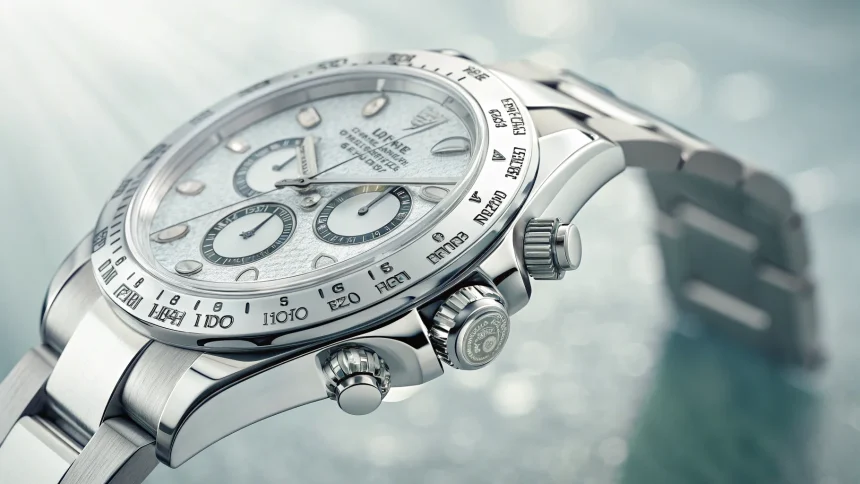A new Rolex Daytona model has been crafted from platinum, marking a significant shift in the luxury watchmaker’s approach to one of its most iconic timepieces. This material choice represents a departure from tradition, as Rolex did not incorporate platinum into its Daytona line until 2013.
The Platinum Revolution
The introduction of platinum to the Daytona collection in 2013 signaled a new direction for the prestigious watch line. Before this change, Rolex had restricted its material choices for the Daytona to more traditional options, making the platinum version a notable addition to the luxury watchmaker’s portfolio.
Platinum, known for its weight, durability, and distinctive luster, brings a new level of exclusivity to the already coveted Daytona model. The precious metal is significantly rarer than gold and requires specialized craftsmanship to work with effectively.
Market Implications
The platinum Daytona represents more than just a material change—it signals Rolex’s response to evolving luxury market demands. High-end watch collectors increasingly seek rare materials and limited production models, making platinum an attractive option for the brand to explore.
Watch industry experts note that platinum models typically command premium prices compared to their gold or steel counterparts. This positioning allows Rolex to target the uppermost segment of the luxury watch market with these exclusive offerings.
Daytona’s Evolution
The Cosmograph Daytona, first introduced in 1963, has undergone numerous changes throughout its history. The watch was originally designed for professional race car drivers, featuring a tachymeter scale that allows wearers to measure average speeds.
Key developments in the Daytona timeline include:
- 1963: Original Daytona introduced
- 1988: Self-winding movement added
- 2000: In-house movement developed
- 2013: First platinum model released
The addition of platinum to the material lineup represents one of the most significant changes in the model’s recent history, reflecting Rolex’s willingness to innovate while maintaining the watch’s iconic status.
Collectors and watch enthusiasts have closely followed these material developments, with platinum models often becoming highly sought after in both retail and secondary markets. The rarity of platinum Daytonas has contributed to their status as investment pieces within the watch collecting community.
As Rolex continues to refine its approach to luxury watchmaking, the platinum Daytona stands as a testament to the brand’s commitment to both tradition and innovation in the competitive high-end watch market.









